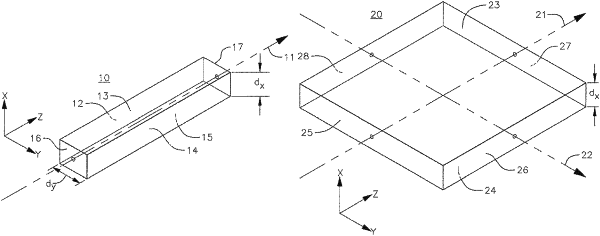| CPC A61L 2/10 (2013.01) [A61L 2/238 (2013.01); A61L 2/26 (2013.01); G02B 5/008 (2013.01); G02B 6/0023 (2013.01); G02B 6/0065 (2013.01); G02B 6/102 (2013.01); A61L 2202/11 (2013.01); G02B 6/003 (2013.01); G02B 6/0043 (2013.01); G02B 6/0066 (2013.01)] | 6 Claims |

|
1. A method of fabricating a self-sanitizing surface structure, the self-sanitizing surface structure comprising a waveguide; the waveguide comprising: a propagating layer having a first transverse side and a second transverse side opposite the first transverse side, the first transverse side being exposed to air and configured to selectively refract light; and a support layer in direct contact with the second transverse side of the propagating layer, the waveguide being configured to selectively refract about 0.01% to about 25% of the flux of an ultraviolet (UV) light injected into the propagating layer, the selective refraction occurring when a residue is on the first transverse side and at an interface between the first transverse side and the residue, the method comprising:
attaching optical mirrors to a substrate, the optical mirrors having a height larger than that of the substrate;
forming the propagating layer by applying an ultraviolet (UV)-transparent pre-polymer coating between the optical mirrors and curing the UV-transparent pre-polymer coating;
attaching the support layer to the substrate;
attaching the propagating layer to the support layer; and
coupling a UV light source to an injection end of the propagating layer.
|